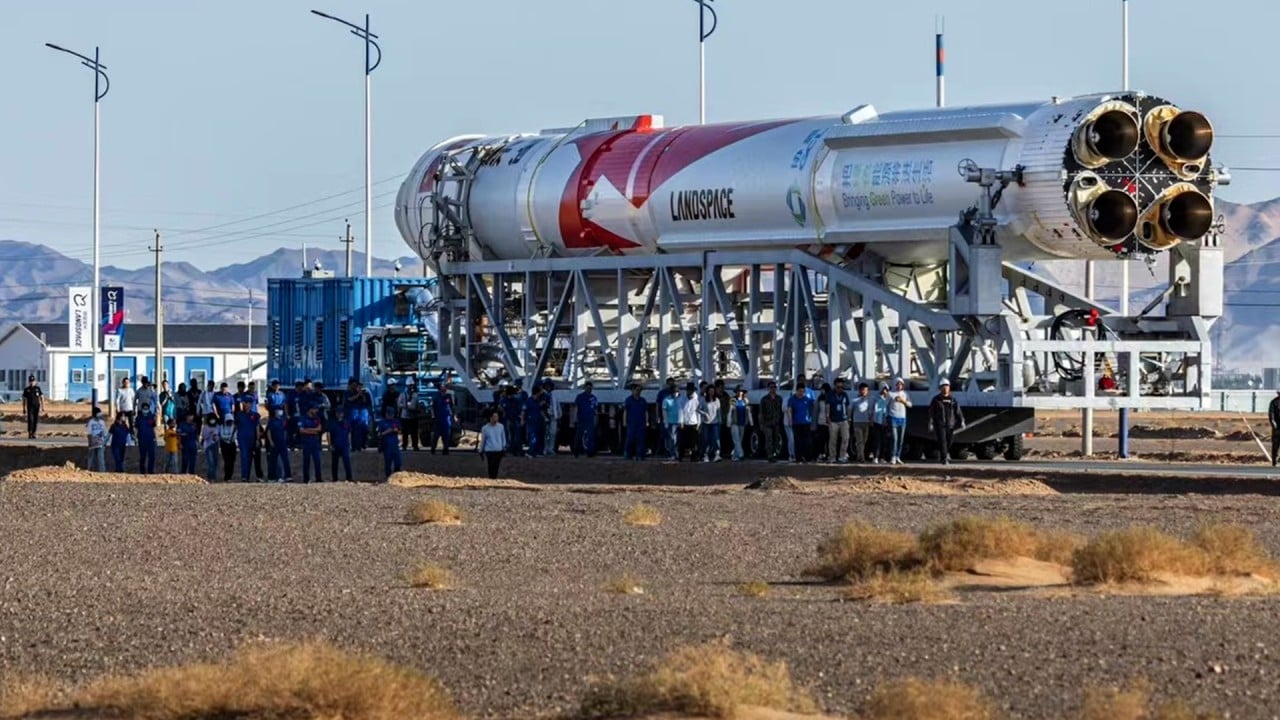
China boosts its Project GW satellite rival to compete with Elon Musk’s Starlink
- China’s satellites likely to be in orbits lower than US counterparts ‘to minimise collision risks and maintain safe distances’
- Qu Wei, of China Academy of Aerospace Aerodynamics, accuses Starlink of initiating a space version of ‘enclosure movement’ in low-Earth orbit
Project GW is “forging ahead in an orderly manner”, according to Qu Wei, an aerothermal expert from the China Academy of Aerospace Aerodynamics in Beijing.
It will “likely place its nearly 13,000 satellites in orbits lower than those of their US counterparts to minimise collision risks and maintain safe distances”, he said.
“Lower orbit satellites enjoy the advantages of high resilience, flexible deployment and large transmission capacity, while being less affected by terrain,” wrote Qu, who is a member of the National Committee of the Chinese People’s Political Consultative Conference, in an article for CPPCC Daily on Thursday.
“For China to establish its own Starlink, the key is to master reusable rocket technologies,” he wrote. “The development of methane-fuelled rockets is also critical, a direction in which China just recently made important progress.”
Starlink, founded by American billionaire Elon Musk, is a satellite network developed by the US aerospace company SpaceX to provide high-speed, low-cost internet services from space to any location on Earth. So far, the company has sent more than 4,500 satellites into orbit, most of which are operating about 550km (342 miles) above the Earth.
Eventually, Starlink will become a megaconstellation of 42,000 satellites. Some Starlink satellites will fly in orbits as low as about 350km to enable faster communications, but atmospheric drag may pose a challenge that reduces their lifespan.
US’ space industry is ‘most advanced’ but China may have it beat in 1 measure
In his article, Qu accused Starlink of initiating a space version of the “enclosure movement” in low-Earth orbit, referring to the historic seizing of land formerly used by commoners in England.
“The total number of Starlink satellites is so large that it makes low-Earth orbits really crowded and dangerous. These satellites also occupy a large number of radio frequency bands, which limits the use of space by other nations,” he wrote.
“The costs of Starlink satellites have been reduced to such a low level that, whenever a collision happens, the other party will pay a higher price.”
Qu also highlighted connections between Starlink and the US military. He said Starlink satellites could interfere with navigation signals, enable collaborative combat and high-precision strikes, and destroy target spacecraft in orbit, among other things.
“It is no secret that working with Starlink, the US is deploying a space-based defensive, and even offensive, system.”
The Starlink project “poses a threat to” the safety and information sovereignty of other nations in low-Earth orbit, he said.
Malaysia license for Elon Musk’s Starlink internet services in remote areas
Before Guowang, China had planned two much smaller communications satellite networks – Hongyan and Hongyun – which “laid the foundation for later building China’s Starlink”.
“China has the advantage of concentrating its efforts to accomplish major tasks, and the Chinese version of Starlink is advancing steadily,” Qu wrote.
“The development of China’s space industry and the fate of the Chinese people must be controlled in their own hands.”


